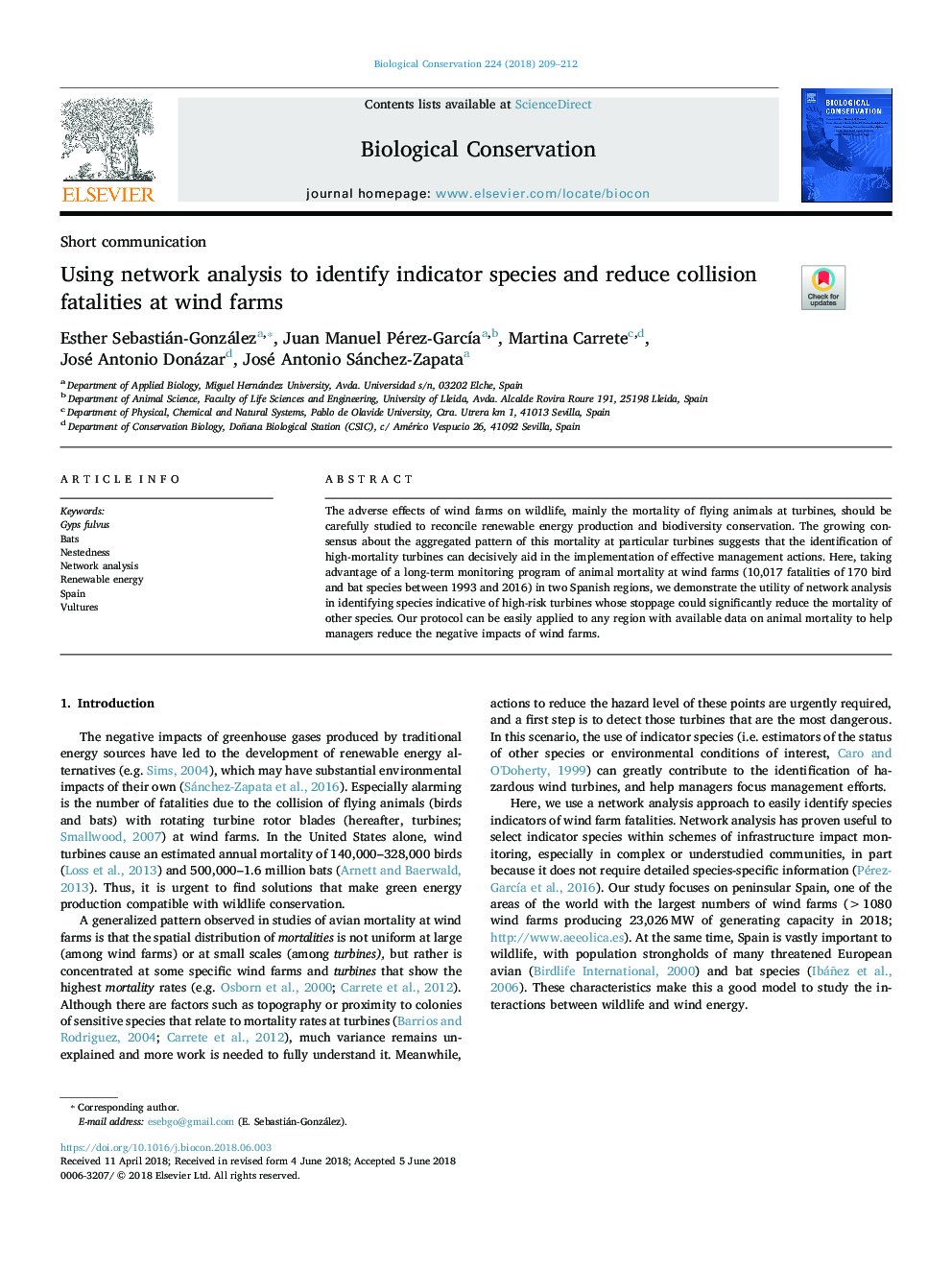| Article ID | Journal | Published Year | Pages | File Type |
|---|---|---|---|---|
| 8847225 | Biological Conservation | 2018 | 4 Pages |
Abstract
The adverse effects of wind farms on wildlife, mainly the mortality of flying animals at turbines, should be carefully studied to reconcile renewable energy production and biodiversity conservation. The growing consensus about the aggregated pattern of this mortality at particular turbines suggests that the identification of high-mortality turbines can decisively aid in the implementation of effective management actions. Here, taking advantage of a long-term monitoring program of animal mortality at wind farms (10,017 fatalities of 170 bird and bat species between 1993 and 2016) in two Spanish regions, we demonstrate the utility of network analysis in identifying species indicative of high-risk turbines whose stoppage could significantly reduce the mortality of other species. Our protocol can be easily applied to any region with available data on animal mortality to help managers reduce the negative impacts of wind farms.
Related Topics
Life Sciences
Agricultural and Biological Sciences
Ecology, Evolution, Behavior and Systematics
Authors
Esther Sebastián-González, Juan Manuel Pérez-GarcÃa, Martina Carrete, José Antonio Donázar, José Antonio Sánchez-Zapata,
